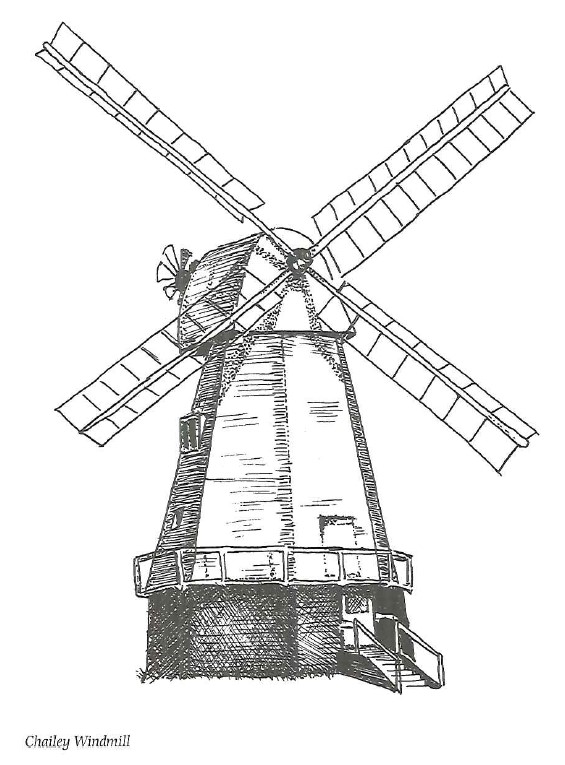A plaque on the wall of one of the cottages in the village High Street marks the old home of the village’s most famous son. He was Thomas Turner (1729-1789), the village’s Samuel Pepys, whose candid diaries bring the atmosphere of his age vividly alive and leave the reader sometimes despairing of the author.
Turner, who among other things was village schoolmaster, undertaker and draper, fought a constant battle between piety and the demon drink. In 11 years he filled more than 100 books with a full and sincere account of his lapses and repentances. The lapses were frequent, with many furious drinking bouts in the village and further afield, breaking his own ‘Rules of Proper Regimen’ which were never to drink more than four glasses of strong beer. If there is either wine or punch never on any terms of persuasion to drink more than eight glasses. I will always go to bed at or before ten’.
It was on his bed one memorable morning that Turner was goaded by a group of friends (including the parson) to put on his wife’s petticoats and dance without shoes and stockings for the amusement of the drunken visitors, though there is a more typical entry for 2 February, 1758: “We supped at Mr Fuller’s and spent the evening with a great deal of mirth, till between one and two. Tho. Fuller brought my wife home upon his back. I cannot say I came home sober, though I was far from being bad company. I think we spent the evening with a great deal of pleasure.’
In addition to problems with the bottle Turner seems to have had problems with his wife, Peggy Slater, though after her death she is always referred to in his diary in the most reverent terms. His intimate disclosures cease with his second marriage, to Molly Hicks (though not before revealing that she was rather plain).
The ‘Sussex Cannibal’ lived in East Hoathly. He was the Cavalier Colonel Sir Thomas Lunsford, a giant of a man who was said to dine on children (he supposedly went about with infant limbs in his pocket by way of mid-meal snacks).
Whatever his gruesome reputation, it was for killing deer in the park of Sir Thomas Pelham that the colonel was tried in 1632 and for a murderous assault upon that gentleman when he
took a pot shot at him outside the church. The trail of the bullet can still be seen on the stonework on the south side of the west door. The colonel seems to have escaped with a hefty fine and in 1649 he “sold all he had’ and emigrated with his family to Virginia.
One of the numerous Sussex homes of the Pelhams was Halland Place, which lay on the parish boundary between East Hoathly and Laughton. When one of the family’s old retainers fell into pauperism the two parishes went to Law to decide which would have to foot the bill for his claim for relief. The pauper had spent most of his life at Halland Place but a survey revealed that his bed stood over the parish boundary. The Law duly decided that East Hoathly should have to pay for his shelter and sustenance because his head had lain in the parish when he was asleep.
A village parson of the old days was a renowned scruff, with a shirt that was always hanging out and ragged breeches. A bountiful lady of the village found his sartorial style particularly offensive and so bequeathed him one pair of breeches a year. She also presented his successors with an area of glebe and woodland, the income from which was to be devoted to a new pair of breeches for the parish parson. The site is still known as Breeches Wood.
In the church is a dainty piece of Norman art which was once thrown out as rubbish. The pillar piscina, with zigzag decoration on the shaft, was dug up in the churchyard during restoration work in the 19th century and restored to its proper place.
The village found it difficult to come to terms with the effects of the motor car. With a 90 degree bend in the heart of the old community, it was simply not built to cope with the hordes of summer day trippers eating up the miles to the coast at Eastbourne. Relief came in the shape of a bypass.
It has restored East Hoathly’s High Street to the sort of peaceful place conjured up by pre-war recollections of Whit Monday, a red letter occasion in the village calendar known as Club Day (the club being what the men paid into in case of need – a form of insurance). The men gathered in the morning and, led by the Blackboys Band, marched to the church for a thanksgiving service. Then they retired to the local inn for lunch. In the afternoon the families gathered on the recreation ground for games, races and a picnic. For this day the girls always wore new dresses, usually made by their mothers.
